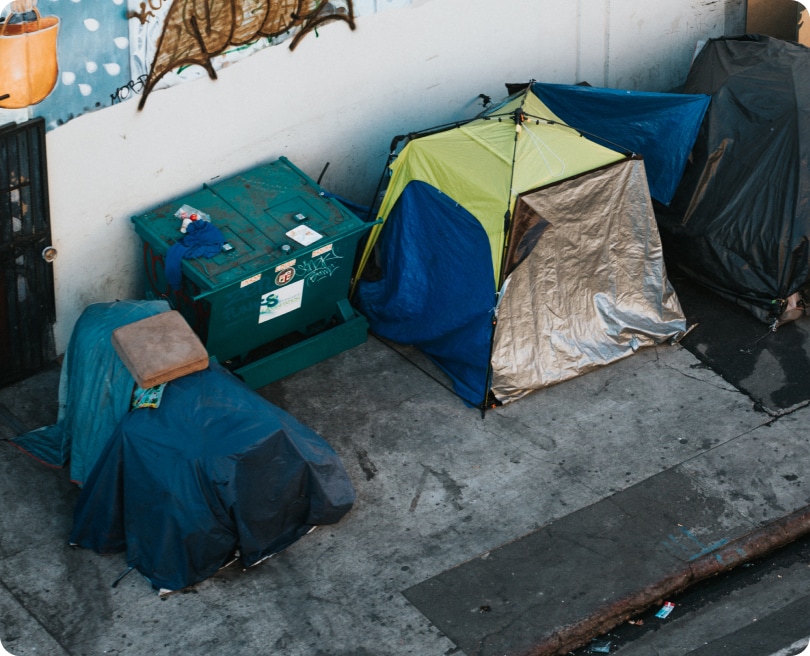Secure Housing
Fostering Secure Housing for Transition Age Youth
The child welfare system is sometimes described as a highway to homelessness. An estimated 20 percent of young adults who are in care become homeless the moment they’re emancipated at the age of 18. And nationwide, 50% of the homeless population spent time in foster care.
Foster care is designed to provide temporary housing and care for children and adolescents until they can be either reunited with their family, be taken in by relatives, adopted, or emancipated as an adult. Too often, however, youth that pass through the foster care system fail to find permanent homes, transitioning from one precarious living situation to another.
Housing insecurity has wide-reaching consequences, from disrupting educational opportunities to complicating mental health recovery, with youth often resorting to couch surfing or living in unsafe conditions.
Foster care is designed to provide temporary housing and care for children and adolescents until they can be either reunited with their family, be taken in by relatives, adopted, or emancipated as an adult. Too often, however, youth that pass through the foster care system fail to find permanent homes, transitioning from one precarious living situation to another.
Housing insecurity has wide-reaching consequences, from disrupting educational opportunities to complicating mental health recovery, with youth often resorting to couch surfing or living in unsafe conditions.


Urgency to Act
At NFYI, we understand that many foster youth face housing challenges not just due to financial barriers but also due to the trauma they’ve experienced. This reality shapes the way we approach housing support, ensuring it’s not just about finding a place to live, but also creating safe, stable, and nurturing environments where young adults can thrive. With access to stable housing, foster youth can focus on their education, employment, and overall well-being.
In a county with a homelessness crisis, current and former foster youth face without stable housing are experiencing a crisis of multiple dimensions. When we learned that 23 young adults age out of foster care in LA County and straight into homelessness each month, we launched the Urgency to Act campaign, with a goal of ensuring that no one ages out of care and into being unhoused by addressing the intersection of challenges transition age youth face..

Addressing Housing Insecurity: Key Policy Recommendations
We’re working to address the systemic issues around housing insecurity for foster youth
through actionable policy recommendations:
through actionable policy recommendations:
1
Increase Housing Voucher Availability:
Expanding access to housing vouchers and making them accessible for current and former foster youth will ensure immediate access to safe, stable housing options.
2
Incentivize Landlords
By offering financial incentives to landlords, we can increase the number of available rental properties open to foster youth, helping mitigate concerns around credit and rental histories.
3
Remove Barriers to Housing
Policies that waive co-sign requirements and eliminate exclusion based on felony convictions will expand housing opportunities for foster youth. Additionally, ensuring foster youth can use Section 8 vouchers on college campuses will improve their chances for educational and social mobility.
4
Basic Needs Campus Navigators
Training specialized support staff for higher education institutions will ensure that foster youth have the guidance they need to navigate housing options both on and off campus.
5
Increase SILP Rates
The Los Angeles County Department of Health Services should work with the state to ensure a new rate structure is passed which will increase Supervised Independent Living Program (SILP) monthly payments to at least $2,200 allowing foster youth to live independently from service providers. After the rate structure has been passed, ensure timely and accurate implementation of the structure.
NFYI in Action: Mobilizing for Change
NFYI members have been instrumental in local housing advocacy efforts. For example, in Los Angeles County, our team worked alongside community partners to support Proposition HHH, a $1.2 billion bond initiative designed to increase the production of supportive housing. The initiative will help build 10,000 units for homeless Angelenos, and NFYI helped ensure that foster youth voices were heard in the oversight of the program’s implementation.
Foster Youth Facts & Figures:


An average of 1 out of every 4 youth in foster care will become homeless within 4 years of aging out of foster care

Approximately 25% of former foster youth experience homelessness within 4 years of being emancipated from the foster care system.

550,000 youths experience homelessness
According to the National Alliance to End Homelessness, each year approximately 550,000 youth without parents/guardians and young adults up to age 24 experience a homelessness episode of longer than one week. More than half are under the age of 18.
Your voice matters. Help us make a change.


